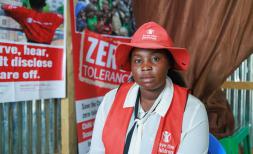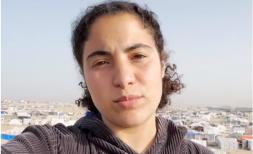Still left behind? New research underscores the need for urgent action

“The SDGs are achievable, we’re just not achieving them”
This statement from Professor Jeffrey Sachs was made at the opening of the 2018 High Level Political Forum at the United Nations – the annual gathering of world leaders to discuss the progress they’re making towards the Sustainable Development Goals (SDGs). Agreed almost three years ago, the SDGs chart an ambitious 15-year course to a world in which poverty has been eradicated by 2030.
Unfortunately, Sachs’ statement rings true. A major reason for that is a failure to reduce unfair inequalities that are holding millions of children across the world back.
New research we’re releasing today illustrates the extent of the problem across multiple SDG indicators. Child mortality – one of the starkest measures of poverty – is a case in point:
On current trends, there will still be more than 4 million under-5 deaths in the year 2030.
Children in the world’s poorest households are 40% more likely to die young than the global average. This gap is only set to reduce minimally by 2030.
In 19 of the 45 countries that are off-track for achieving the SDG child mortality target for all segments of society, the gap is not set to close by the end of this century, if at all.

PUTTING THE PLEDGE TO LEAVE NO ONE BEHIND AT THE HEART OF SDG MONITORING AND REVIEW
A key part of the problem lies in the failure to track inequalities as part of SDG monitoring and review processes, and the extent to which the most deprived and marginalised children are catching up with their more advantaged peers. The focus is still overwhelmingly on averages, which mask unfair inequalities and provide leaders and development agencies with little knowledge and incentive to reach the furthest behind.
Analysis by academics and civil society found that, of the 42 countries that had volunteered to report on the progress they were making towards the goals at last year’s HLPF, only 14 of them provided an indication of the availability of data to leave no one behind – with many noting that more data was needed. These information gaps need to be addressed, but there are still improvements to monitoring that could be made with the data we have right now. Inequalities must be tracked systematically over time and across SDG indicators using available data, in both national reports or in global monitoring.
Our report illustrates what improved reporting could look like with existing data. Our accompanying free online tool, GRID, means that anyone can create inequality trend graphs for low and middle income countries similar to the one above depicting global trends. You can read more on that here.
TACKLING INEQUALITIES TO ACCELERATE SDG PROGRESS
The pledge to Leave No One Behind is particularly important for children because we know that they are held back because of factors that are completely out of their control: how much money their family has, where they live, their gender, their identity and whether they have a disability. These inequalities are deeply unfair, and a violation of children’s rights.
Put into practice, the pledge is a commitment to tackle these inequalities, reach the world’s poorest children, and give them a chance to fulfil their potential. That’s why our new report, Still left behind? is calling for world leaders to ramp up their efforts to tackle inequalities and start tracking the rate at which the world’s most deprived and marginalised children are catching up with their more advantaged peers.
The new statistics that we present show the incredible impact that focusing on inequality could have.

WHAT NEXT?
We recognise that putting children that are furthest behind first is no easy task – it means collecting and reporting disaggregated data to identify who the groups are that are furthest behind are, facing often uncomfortable truths about why they have been left behind, and allocating resources in new ways to reach and help them. But our new research shows that we can’t afford delay.
Thirty-five countries have already volunteered to report on their SDG progress at next year’s HLPF and this high level of enthusiasm is really encouraging. We hope that next year we’ll see a marked improvement in the standard of reporting on progress towards the pledge to Leave No One Behind, with a clear focus on the rate at which the furthest behind groups are catching up with national and global averages.
THE LAST WORD
The foreword to our new report was written by three of our amazing Girl Champions – Xhorda from Alabania, Saleha from India, and Maryam from Nigeria – girls who are campaigning for change in their own communities. It seems right that the last word should go to them:
“In 2015, world leaders promised to Leave No One Behind. This means that everyone should benefit from the Sustainable Development Goals, especially those who are missing out at the moment. We can help lead the change. But we also need our leaders to keep the promise they made to people. Together, we need to make the poverty and discrimination that children face visible, understand it, and address it.”







